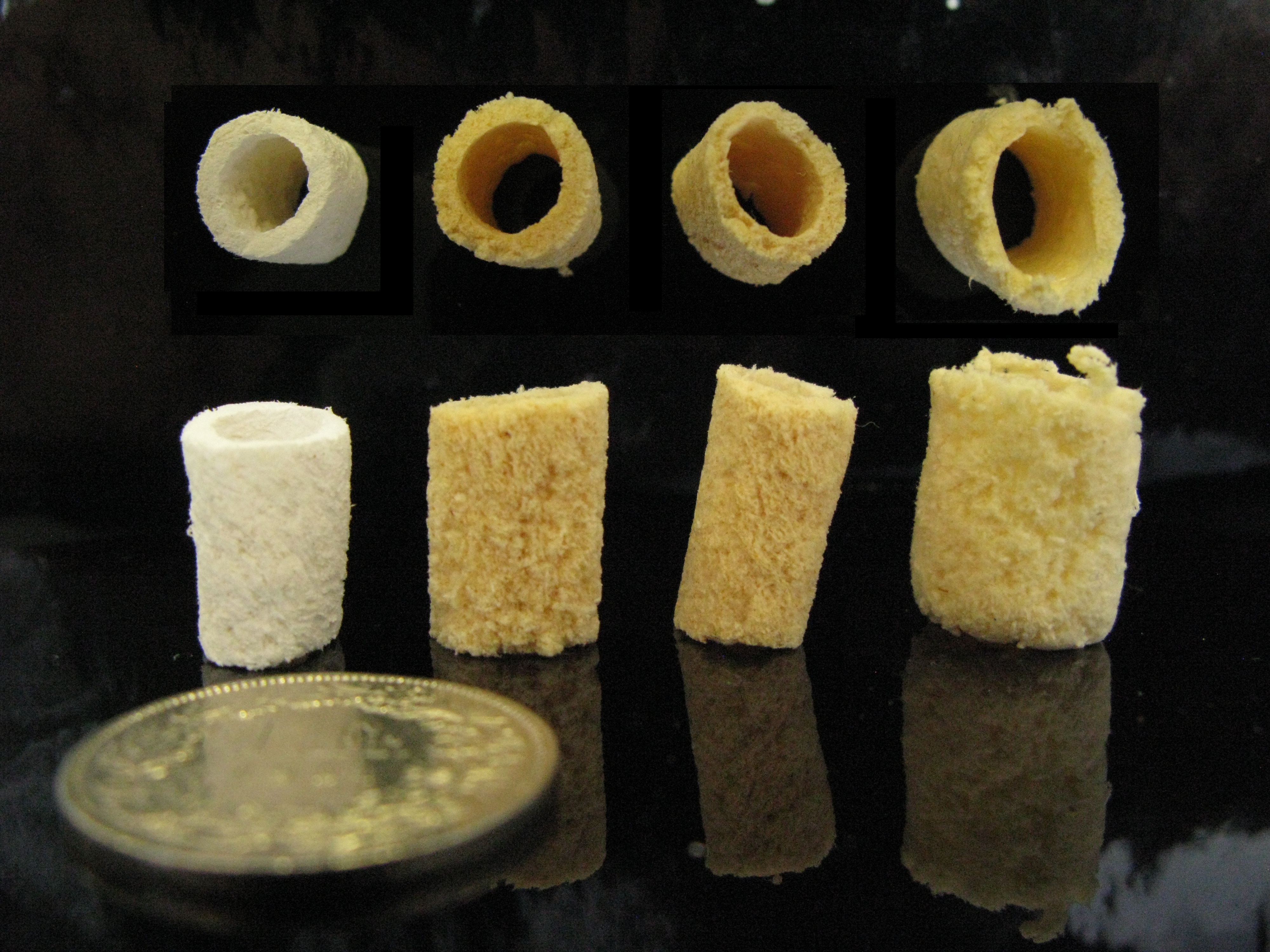Porous, ultralight 3D tubular scaffolds from short electrospun nanofibers
Tubular organs are ubiquitously found within the human body and include blood vessel, trachea gastrointestinal tract and urinary tract. These complex tubular tissues are composed of different types of cells, extracellular matrix and proteins but share the functional purpose of transporting complex nutrients in liquid or solid form. Using active contractions of muscles placed around the organ and specific cells within the lumen, transportation requires the underlining scaffold to be adaptable to various conditions. Repair and regeneration of these tubular organs is of great interest due to the high amount of surgeries performed annually. However, the design and fabrication of synthetic scaffolds that mimic the mechanical and structural characteristics of their natural counterparts appears more difficult than expected. Here, we show the construction and comparison of different tubular structures fabricated via the combination of two-dimensional (2D) electrospinning and the freeze-casting method.[1] Together these techniques allow us to create 3D tubular scaffolds with high open porosity and adaptable mechanical properties depending upon the polymer used.

[1] a) F. Deuber, S. Mousavi, M. Hofer, C. Adlhart, ChemistrySelect 2016, 1, 5595; b) F. Deuber, C. Adlhart, Chimia 2017, 71, in press; c) F. Deuber, S. Mousavi, L. Federer, C. Adlhart, Advanced Materials Interfaces 2017, in press.